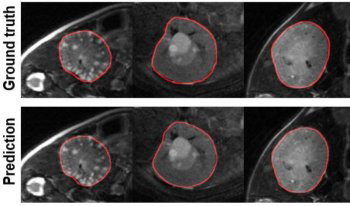
The aim of this work is to transfer the model trained on magnetic resonance images of human autosomal dominant polycystic kidney disease (ADPKD) to rat and mouse ADPKD models. A dataset of 756 MRI images of ADPKD kidneys was employed to train a modified UNet3+ architecture, which incorporated residual layers, switchable normalization, and concatenated skip connections for kidney and cyst segmentation tasks. The trained model was then subjected to transfer learning (TL) using data from two commonly utilized animal PKD models: the
Chetana Krishnan, Emma Schmidt, Ezinwanne Onuoha, Sean Mullen, Ronald Roye, Phillip Chumley, Michal Mrug, Carlos E. Cardenas, Harrison Kim, Consortium for Radiologic Imaging Studies of Polycystic Kidney Disease (CRISP) investigators, "Deep Transfer Learning from Constrained Source to Target Domains in Medical Image Segmentation" in Journal of Imaging Science and Technology, 2024, pp 1 - 10, https://doi.org/10.2352/J.ImagingSci.Technol.2024.68.6.060505
 Find this author on Google Scholar
Find this author on Google Scholar Find this author on PubMed
Find this author on PubMed